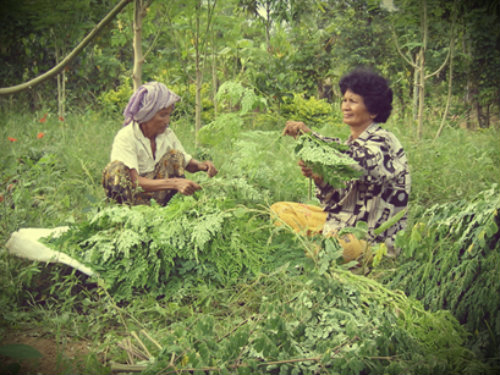What is Moringa?
Although few Westerners have ever heard of it, moringa is potentially one of the planet’s most valuable plants, at least in humanitarian terms. It’s also known as the horseradish tree, drumstick tree, benzolive tree, kelor, marango, mlonge, moonga, mulangay, nébéday, saijhan, sajna or Ben oil tree and has become naturalized in many parts of the tropics including Central/South America.
Most Nutritious Plant in the world?
I admit, it’s a bit ‘click baity’, however this perennial, drought resistant plant can flourish in horrible soil and maintain a nutritive value that dwarfs our more famous supermarket veggies. Moringa is a significant source of vitamins and protein and provides a good balance of all the essential amino acids. That alone is unusual in a plant food, but these pods also possess one of the highest vitamin C levels of any tropical vegetable, not to mention impressive quantities of other vitamins and antioxidents.
- 46 types of antioxidants
- 18 amino acids
- 10 times the vitamin A of carrots
- 15 times the potassium of bananas
- 17 times the calcium of cows milk
- 25 times the iron of spinach
Many consumers are not aware of the fact that fruits and vegetables, whether fresh, frozen or canned, lose a percentage of their nutrients from the time they are picked. One of the amazing qualities of Moringa leaves is that when you shade dry it correctly, the nutrient content actually increases an average of 300 to 500% (with the exception of its Vitamin C content which decreases by 50%). Moringa powder can be used to nutritionally bolster anything you’re eating. The powder is even use to increase milk production among lactating women.
Moringa is more than just an awesome food source
A sort of supermarket on a trunk, it yields at least four different edibles: pods, leaves, seeds, and roots. And beyond edibles, it provides products that make life more self-sufficient: lubricating oil, lamp oil, wood, paper, liquid fuel, skin treatments, and the means to help purify water, to name but a few. The living tree, itself, also provides such things as shade, landscaping, and shelter from the elements.
The moringa tree follows the Survival Gardener mantra well, “low input, high output”. Minimal work will bring pounds upon pounds of harvest throughout the year.
If you’re interested in becoming less dependent on the supermarket, I highly suggest adding this to your garden. We have over 50 moringa oleifera trees growing on the property now. It’s a rapidly growing tree and I strongly suggest keeping it cut short to a level where leaf collection is possible. It’s common for these to grow 10-15 feet per year. Even if it gets too tall, you can always cut this tough tree short again and it will come back.
Sources:
Moringa oleifera: A review on nutritive importance and its medicinal application
https://www.sciencedirect.com/science/article/pii/S2213453016300362
Moringa: The Next Superfood
https://www.universityofcalifornia.edu/news/moringa-next-superfood




GIPHY App Key not set. Please check settings